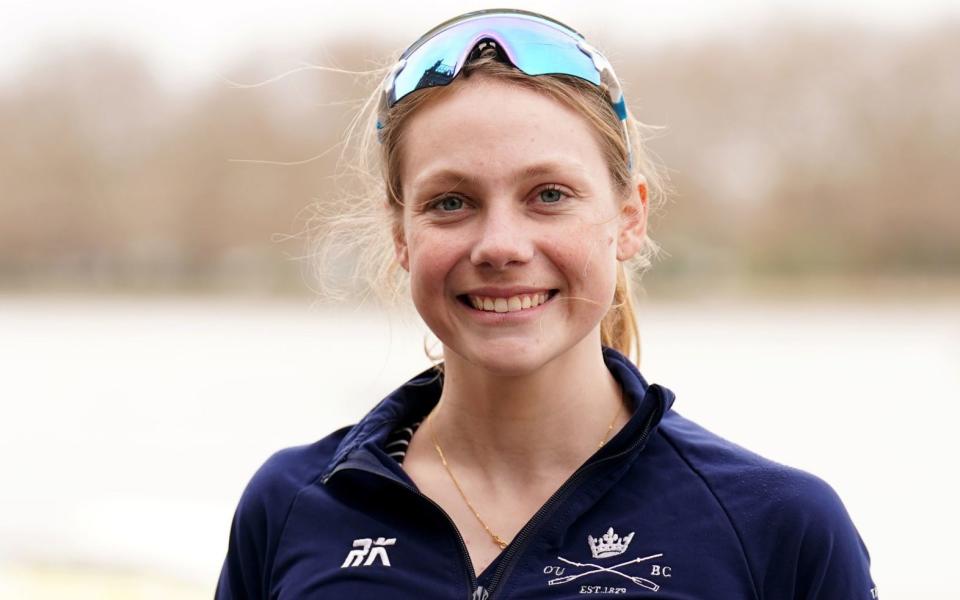Boat Race to make history with first ‘gender swap’ coxes in 40 years

The University Boat Race has been called many things in its 166-year history – anachronistic, exclusive, oddball among them. But a cradle of the sexual revolution is not a regular observation.
Yet on Sunday, as the crews from Oxford and Cambridge haul their way along the River Thames from Putney to Mortlake, there will be reason to suggest this is the most gender fluid sporting event in the country. Because steering the Oxford men’s eight will be a woman, while the coxswain in charge of the Cambridge women is a man. And both will play a vital part in their team’s prospects.
“I wouldn’t say rowers don’t use their brain, because you need a lot of mental strength to compete in this race,” says James Trotman, a first year Economics undergraduate at Sidney Sussex College, who will be steering the Cambridge women’s boat. “But the cox has to be the brains of the boat. It’s not just about steering, you’re a key tactician, cheerleader, motivator. You really do have to multitask. Which, as you know, is hard for us blokes.”
This is not the first time a woman has been in charge of the men’s boat and a man in charge of the women’s in the same year. Indeed it happened just 12 months after Sue Brown became the first woman to cox in the Boat Race in 1981. The following year, Brown sat in the Oxford boat again, while Philip Edwards was the coxswain for the Oxford women’s eight, who then raced in Henley. But that was very much a one-off. And it didn’t occur again for another 35 years. Now, however, it is becoming an ever more frequent thing, with men and women steering the opposite sex across the 4.2 miles course along the Tideway.

“I think the big change was when Fisa [World Rowing's governing body] made it possible to cox for the opposite sex in the Olympics at Tokyo,” says Anna O’Hanlon, who is doing a masters in Clinical Embryology at Somerville College and will cox the Oxford men. “Then a proper pathway to the top of the sport opened up. It also allows the cox to work with the team whose skill set they best fit.”
O’Hanlon, for instance, is said to have the kind of approach well suited to a men’s crew. Passionate, focused, single minded, she is committed to victory. Trotman, on the other hand, reckons himself more likely to create team spirit through making a joke. Which, he says, the women crew members enjoy.
“I think without doubt there is a difference between men and women rowers,” says O’Hanlon. “I mean no two crews are the same, they all want different things from their cox. But you can generalise to say the rhythm in a women’s boat will be quite different from a men’s. And you have to adapt accordingly. I love coxing both of them.”
Trotman agrees. “There are a few technical differences in the rowing stroke which I won’t bore you with,” he says. “But there is a big difference in the vibe in the squad. Women tend to be more chilled, but just as focused. Which I like."
Such is the ease with which coxes can adapt, he adds, that the art of steering a race boat has become the sporting discipline which has the most even playing field across the sexes.
Indeed in the Cambridge squad, since the women’s race was moved to the Tideway in 2015, the system is set up simply to pick the most appropriate coxswain – man or woman – for each crew. Though when it was announced that Trotman would be in charge of the women, there was some trepidation among the rowers.

“I admit I was sceptical at first,” says Rosa Millard, who will row in the Cambridge two seat. “Largely because he learned his rowing at an all-boys school and had never coxed women before. But I’ve been pleasantly surprised. He gets us.”
It is an unusual relationship between cox and crew. In the boat, the cox steers the course, reading the currents to ensure the best direction. They also, via a loudspeaker, loudly issue instructions. Out of it, they work alongside the coach in training, chivvying, motivating, leading the visualisation sessions. And this despite contributing nothing physically to the collective effort.
“Fortunately they have never accused me of mansplaining,” says Trotman. “No, I haven’t heard that one yet.”
O’Hanlon, meanwhile, says she is not one for being too noisy in the boat.
"I’m more reserved than some coxswains," she says. "I like to use my words to get a reaction. So when the boys hear me it means something: if I say now, it’s now."
And, unlike many of her contemporaries of either sex, she is not a cox inclined to use foul language to chivvy her charges.
“Yeah, the Aussie who doesn’t swear,” she says. “Who’d believe it?”
One thing Boat Race coxes of both and all sexes face, however, is the certainty that victory will be marked by the age old tradition of being hurled into the water by the rest of their crew.
“Yeah, will be interesting if we win,” says Trotman. “I just hope they don’t choose Sunday to release a load of sewage into the Thames.”

 Yahoo Sport
Yahoo Sport 





































